Search for Indicators
All Data
Indicator Gauge Icon Legend
Legend Colors
Red is bad, green is good, blue is not statistically different/neutral.
Compared to Distribution
 the value is in the best half of communities.
the value is in the best half of communities.
 the value is in the 2nd worst quarter of communities.
the value is in the 2nd worst quarter of communities.
 the value is in the worst quarter of communities.
the value is in the worst quarter of communities.
Compared to Target
 meets target;
meets target;  does not meet target.
does not meet target.
Compared to a Single Value
 lower than the comparison value;
lower than the comparison value;
 higher than the comparison value;
higher than the comparison value;
 not statistically different from comparison value.
not statistically different from comparison value.
Trend

 non-significant change over time;
non-significant change over time; 
 significant change over time;
significant change over time;  no change over time.
no change over time.
Compared to Prior Value
 higher than the previous measurement period;
higher than the previous measurement period;
 lower than the previous measurement period;
lower than the previous measurement period;
 no statistically different change from previous measurement period.
no statistically different change from previous measurement period.
State: Kansas
Health / Alcohol & Drug Use
Value
Compared to:
State: Kansas Death Rate due to Drug Poisoning
State: Kansas Death Rate due to Drug Poisoning
18.0
Deaths per 100,000 population
(2019-2021)
Compared to:
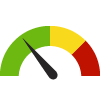



U.S. States
The distribution is based on data from 50 U.S. states and the District of Columbia.

US Value
(27.2)
The regional value is compared to the national value.

HP 2030 Target
(20.7)
<div>SU-03: Reduce drug overdose deaths <strong>(LEADING HEALTH INDICATOR)</strong></div>
33.3%
(2017)
Compared to:



Prior Value
(35.7%)
Prior Value compares a measured value with the previously measured value. Confidence intervals were not taken into account in determining the direction of the comparison.

Trend
This comparison measures the indicator’s values over multiple time periods.<br>The Mann-Kendall Test for Statistical Significance is used to evaluate the trend<br>over 4 to 10 periods of measure, subject to data availability and comparability.
16.6%
(2017)
Compared to:



Prior Value
(17.8%)
Prior Value compares a measured value with the previously measured value. Confidence intervals were not taken into account in determining the direction of the comparison.

Trend
This comparison measures the indicator’s values over multiple time periods.<br>The Mann-Kendall Test for Statistical Significance is used to evaluate the trend<br>over 4 to 10 periods of measure, subject to data availability and comparability.
7.6%
(2017)
Compared to:



Prior Value
(8.2%)
Prior Value compares a measured value with the previously measured value. Confidence intervals were not taken into account in determining the direction of the comparison.

Trend
This comparison measures the indicator’s values over multiple time periods.<br>The Mann-Kendall Test for Statistical Significance is used to evaluate the trend<br>over 4 to 10 periods of measure, subject to data availability and comparability.
15.1%
(2017)
Compared to:



Prior Value
(16.5%)
Prior Value compares a measured value with the previously measured value. Confidence intervals were not taken into account in determining the direction of the comparison.

Trend
This comparison measures the indicator’s values over multiple time periods.<br>The Mann-Kendall Test for Statistical Significance is used to evaluate the trend<br>over 4 to 10 periods of measure, subject to data availability and comparability.
37.8%
(2017)
Compared to:



Prior Value
(44.9%)
Prior Value compares a measured value with the previously measured value. Confidence intervals were not taken into account in determining the direction of the comparison.

Trend
This comparison measures the indicator’s values over multiple time periods.<br>The Mann-Kendall Test for Statistical Significance is used to evaluate the trend<br>over 4 to 10 periods of measure, subject to data availability and comparability.
71.0%
(2017)
Compared to:



Prior Value
(70.3%)
Prior Value compares a measured value with the previously measured value. Confidence intervals were not taken into account in determining the direction of the comparison.

Trend
This comparison measures the indicator’s values over multiple time periods.<br>The Mann-Kendall Test for Statistical Significance is used to evaluate the trend<br>over 4 to 10 periods of measure, subject to data availability and comparability.
State: Kansas
Health / Cancer
Value
Compared to:
State: Kansas Cancer: Medicare Population
State: Kansas Cancer: Medicare Population
11.0%
(2022)
Compared to:
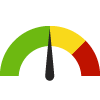




U.S. States
The distribution is based on data from 50 U.S. states and the District of Columbia.

US Value
(12.0%)
The regional value is compared to the national value.

Prior Value
(11.0%)
Prior Value compares a measured value with the previously measured value. Confidence intervals were not taken into account in determining the direction of the comparison.

Trend
This comparison measures the indicator’s values over multiple time periods.<br>The Mann-Kendall Test for Statistical Significance is used to evaluate the trend<br>over 4 to 10 periods of measure, subject to data availability and comparability.
State: Kansas Colorectal Cancer Rate
State: Kansas Colorectal Cancer Rate
39.2
Per 100,000 population
(2014-2018)
Compared to:



Prior Value
(39.1)
Prior Value compares a measured value with the previously measured value. Confidence intervals were taken into account in determining the direction of the comparison.

Trend
This comparison measures the indicator’s values over multiple time periods.<br>The Mann-Kendall Test for Statistical Significance is used to evaluate the trend<br>over 4 to 10 periods of measure, subject to data availability and comparability.
State: Kansas Female Breast Cancer Rate
State: Kansas Female Breast Cancer Rate
129.0
Per 100,000 female population
(2014-2018)
Compared to:



Prior Value
(126.0)
Prior Value compares a measured value with the previously measured value. Confidence intervals were taken into account in determining the direction of the comparison.

Trend
This comparison measures the indicator’s values over multiple time periods.<br>The Mann-Kendall Test for Statistical Significance is used to evaluate the trend<br>over 4 to 10 periods of measure, subject to data availability and comparability.
State: Kansas Lung & Bronchus Cancer Rate
State: Kansas Lung & Bronchus Cancer Rate
54.0
Per 100,000 population
(2014-2018)
Compared to:



Prior Value
(55.7)
Prior Value compares a measured value with the previously measured value. Confidence intervals were not taken into account in determining the direction of the comparison.

Trend
This comparison measures the indicator’s values over multiple time periods.<br>The Mann-Kendall Test for Statistical Significance is used to evaluate the trend<br>over 4 to 10 periods of measure, subject to data availability and comparability.
State: Kansas Male Prostate Cancer Rate
State: Kansas Male Prostate Cancer Rate
109.8
Per 100,000 male population
(2014-2018)
Compared to:



Prior Value
(108.6)
Prior Value compares a measured value with the previously measured value. Confidence intervals were taken into account in determining the direction of the comparison.

Trend
This comparison measures the indicator’s values over multiple time periods.<br>The Mann-Kendall Test for Statistical Significance is used to evaluate the trend<br>over 4 to 10 periods of measure, subject to data availability and comparability.
State: Kansas Mammography Screening: Medicare Population
State: Kansas Mammography Screening: Medicare Population
50.0%
(2022)
Compared to:
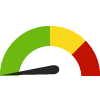




U.S. States
The distribution is based on data from 50 U.S. states and the District of Columbia.

US Value
(47.0%)
The regional value is compared to the national value.

Prior Value
(49.0%)
Prior Value compares a measured value with the previously measured value. Confidence intervals were not taken into account in determining the direction of the comparison.

Trend
This comparison measures the indicator’s values over multiple time periods.<br>The Mann-Kendall Test for Statistical Significance is used to evaluate the trend<br>over 4 to 10 periods of measure, subject to data availability and comparability.
State: Kansas
Health / Diabetes
Value
Compared to:
State: Kansas Diabetes Hospital Admission Rate
State: Kansas Diabetes Hospital Admission Rate
16.5
Per 10,000 population
(2018-2020)
Compared to:


Prior Value
(16.9)
Prior Value compares a measured value with the previously measured value. Confidence intervals were taken into account in determining the direction of the comparison.
State: Kansas Diabetes: Medicare Population
State: Kansas Diabetes: Medicare Population
24.0%
(2022)
Compared to:





U.S. States
The distribution is based on data from 50 U.S. states and the District of Columbia.

US Value
(24.0%)
The regional value is compared to the national value.

Prior Value
(24.0%)
Prior Value compares a measured value with the previously measured value. Confidence intervals were not taken into account in determining the direction of the comparison.

Trend
This comparison measures the indicator’s values over multiple time periods.<br>The Mann-Kendall Test for Statistical Significance is used to evaluate the trend<br>over 4 to 10 periods of measure, subject to data availability and comparability.
State: Kansas
Health / Disabilities
Value
Compared to:
State: Kansas Adults with Disability Living in Poverty
State: Kansas Adults with Disability Living in Poverty
24.6%
(2018-2022)
Compared to:




U.S. States
The distribution is based on data from 50 U.S. states and the District of Columbia.

US Value
(24.9%)
The regional value is compared to the national value.

Trend
This comparison measures the indicator’s values over multiple time periods.<br>The Mann-Kendall Test for Statistical Significance is used to evaluate the trend<br>over 4 to 10 periods of measure, subject to data availability and comparability.
State: Kansas Children with a Disability
State: Kansas Children with a Disability
4.8%
(2018-2022)
Compared to:



US Value
(4.5%)
The regional value is compared to the national value.

Trend
This comparison measures the indicator’s values over multiple time periods.<br>The Mann-Kendall Test for Statistical Significance is used to evaluate the trend<br>over 4 to 10 periods of measure, subject to data availability and comparability.
State: Kansas Persons with a Cognitive Difficulty
State: Kansas Persons with a Cognitive Difficulty
5.6%
(2018-2022)
Compared to:



US Value
(5.3%)
The regional value is compared to the national value.

Trend
This comparison measures the indicator’s values over multiple time periods.<br>The Mann-Kendall Test for Statistical Significance is used to evaluate the trend<br>over 4 to 10 periods of measure, subject to data availability and comparability.
State: Kansas Persons with a Disability
State: Kansas Persons with a Disability
13.4%
(2018-2022)
Compared to:



US Value
(12.9%)
The regional value is compared to the national value.

Trend
This comparison measures the indicator’s values over multiple time periods.<br>The Mann-Kendall Test for Statistical Significance is used to evaluate the trend<br>over 4 to 10 periods of measure, subject to data availability and comparability.
State: Kansas Persons with a Hearing Difficulty
State: Kansas Persons with a Hearing Difficulty
4.2%
(2018-2022)
Compared to:



US Value
(3.6%)
The regional value is compared to the national value.

Trend
This comparison measures the indicator’s values over multiple time periods.<br>The Mann-Kendall Test for Statistical Significance is used to evaluate the trend<br>over 4 to 10 periods of measure, subject to data availability and comparability.
State: Kansas Persons with a Self-Care Difficulty
State: Kansas Persons with a Self-Care Difficulty
2.2%
(2018-2022)
Compared to:



US Value
(2.6%)
The regional value is compared to the national value.

Trend
This comparison measures the indicator’s values over multiple time periods.<br>The Mann-Kendall Test for Statistical Significance is used to evaluate the trend<br>over 4 to 10 periods of measure, subject to data availability and comparability.
State: Kansas Persons with a Vision Difficulty
State: Kansas Persons with a Vision Difficulty
2.4%
(2018-2022)
Compared to:



US Value
(2.4%)
The regional value is compared to the national value.

Trend
This comparison measures the indicator’s values over multiple time periods.<br>The Mann-Kendall Test for Statistical Significance is used to evaluate the trend<br>over 4 to 10 periods of measure, subject to data availability and comparability.
State: Kansas Persons with an Ambulatory Difficulty
State: Kansas Persons with an Ambulatory Difficulty
6.5%
(2018-2022)
Compared to:



US Value
(6.7%)
The regional value is compared to the national value.

Trend
This comparison measures the indicator’s values over multiple time periods.<br>The Mann-Kendall Test for Statistical Significance is used to evaluate the trend<br>over 4 to 10 periods of measure, subject to data availability and comparability.
State: Kansas
Health / Health Care Access & Quality
Value
Compared to:
State: Kansas Average Monthly WIC Participation per 1,000 population
State: Kansas Average Monthly WIC Participation per 1,000 population
16.0
Average cases per 1,000 population
(2023)
Compared to:




US Value
(22.4 in 2017)
The Kansas State value is compared to the U.S. value.

Prior Value
(15.0)
Prior Value compares a measured value with the previously measured value. Confidence intervals were not taken into account in determining the direction of the comparison.

Trend
This comparison measures the indicator’s values over multiple time periods.<br>The Mann-Kendall Test for Statistical Significance is used to evaluate the trend<br>over 4 to 10 periods of measure, subject to data availability and comparability.
State: Kansas Community Spending on Health Care
State: Kansas Community Spending on Health Care
8.6%
(2023)
Compared to:



US Value
(8.0%)
The regional value is compared to the national value.

Prior Value
(8.6%)
Prior Value compares a measured value with the previously measured value. Confidence intervals were not taken into account in determining the direction of the comparison.
State: Kansas Health Insurance Spending-to-Income Ratio
State: Kansas Health Insurance Spending-to-Income Ratio
6.8%
(2023)
Compared to:



U.S. States
The distribution is based on data from 50 U.S. states and the District of Columbia.

Prior Value
(7.0%)
Prior Value compares a measured value with the previously measured value. Confidence intervals were not taken into account in determining the direction of the comparison.
State: Kansas Non-Physician Primary Care Provider Rate
State: Kansas Non-Physician Primary Care Provider Rate
149
Providers per 100,000 population
(2023)
Compared to:




U.S. States
The distribution is based on data from 50 U.S. states and the District of Columbia.

Prior Value
(140)
Prior Value compares a measured value with the previously measured value. Confidence intervals were not taken into account in determining the direction of the comparison.

Trend
This comparison measures the indicator’s values over multiple time periods.<br>The Mann-Kendall Test for Statistical Significance is used to evaluate the trend<br>over 4 to 10 periods of measure, subject to data availability and comparability.
State: Kansas Persons with Health Insurance
State: Kansas Persons with Health Insurance
89.1%
(2021)
Compared to:
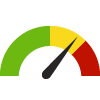




U.S. States
The distribution is based on data from 50 U.S. states and the District of Columbia.

Prior Value
(89.7%)
Prior Value compares a measured value with the previously measured value. Confidence intervals were taken into account in determining the direction of the comparison.

Trend
This comparison measures the indicator’s values over multiple time periods.<br>The Mann-Kendall Test for Statistical Significance is used to evaluate the trend<br>over 4 to 10 periods of measure, subject to data availability and comparability.

HP 2030 Target
(92.4%)
<div>AHS-01: Increase the proportion of people with health insurance <strong>(LEADING HEALTH INDICATOR)</strong></div>
State: Kansas Persons with Private Health Insurance Only
State: Kansas Persons with Private Health Insurance Only
60.2%
(2022)
Compared to:




US Value
(54.8%)
The regional value is compared to the national value.

Prior Value
(59.7%)
Prior Value compares a measured value with the previously measured value. Confidence intervals were not taken into account in determining the direction of the comparison.

Trend
This comparison measures the indicator’s values over multiple time periods.<br>The Mann-Kendall Test for Statistical Significance is used to evaluate the trend<br>over 4 to 10 periods of measure, subject to data availability and comparability.
State: Kansas Persons with Public Health Insurance Only
State: Kansas Persons with Public Health Insurance Only
17.7%
(2022)
Compared to:




US Value
(24.8%)
The regional value is compared to the national value.

Prior Value
(18.2%)
Prior Value compares a measured value with the previously measured value. Confidence intervals were not taken into account in determining the direction of the comparison.

Trend
This comparison measures the indicator’s values over multiple time periods.<br>The Mann-Kendall Test for Statistical Significance is used to evaluate the trend<br>over 4 to 10 periods of measure, subject to data availability and comparability.
State: Kansas Preventable Hospital Stays: Medicare Population
State: Kansas Preventable Hospital Stays: Medicare Population
2,527.0
Discharges per 100,000 Medicare enrollees
(2022)
Compared to:
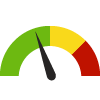




U.S. States
The distribution is based on data from 50 U.S. states and the District of Columbia.

US Value
(2,677.0)
The regional value is compared to the national value.

Prior Value
(2,578.0)
Prior Value compares a measured value with the previously measured value. Confidence intervals were not taken into account in determining the direction of the comparison.

Trend
This comparison measures the indicator’s values over multiple time periods.<br>The Mann-Kendall Test for Statistical Significance is used to evaluate the trend<br>over 4 to 10 periods of measure, subject to data availability and comparability.
State: Kansas Primary Care Provider Rate
State: Kansas Primary Care Provider Rate
78
Providers per 100,000 population
(2021)
Compared to:




U.S. States
The distribution is based on data from 50 U.S. states and the District of Columbia.

Prior Value
(79)
Prior Value compares a measured value with the previously measured value. Confidence intervals were not taken into account in determining the direction of the comparison.

Trend
This comparison measures the indicator’s values over multiple time periods.<br>The Mann-Kendall Test for Statistical Significance is used to evaluate the trend<br>over 4 to 10 periods of measure, subject to data availability and comparability.
State: Kansas Staffed Hospital Bed Ratio
State: Kansas Staffed Hospital Bed Ratio
2.7
Beds per 1,000 population
(2022)
Compared to:



Prior Value
(2.9)
Prior Value compares a measured value with the previously measured value. Confidence intervals were not taken into account in determining the direction of the comparison.

Trend
This comparison measures the indicator’s values over multiple time periods.<br>The Mann-Kendall Test for Statistical Significance is used to evaluate the trend<br>over 4 to 10 periods of measure, subject to data availability and comparability.
State: Kansas
Health / Health Information Technology
Value
Compared to:
State: Kansas Households with an Internet Subscription
State: Kansas Households with an Internet Subscription
88.2%
(2018-2022)
Compared to:




U.S. States
The distribution is based on data from 50 U.S. states and the District of Columbia.

US Value
(88.5%)
The regional value is compared to the national value.

Trend
This comparison measures the indicator’s values over multiple time periods.<br>The Mann-Kendall Test for Statistical Significance is used to evaluate the trend<br>over 4 to 10 periods of measure, subject to data availability and comparability.
State: Kansas Households with One or More Types of Computing Devices
State: Kansas Households with One or More Types of Computing Devices
94.2%
(2018-2022)
Compared to:




U.S. States
The distribution is based on data from 50 U.S. states and the District of Columbia.

US Value
(94.0%)
The regional value is compared to the national value.

Trend
This comparison measures the indicator’s values over multiple time periods.<br>The Mann-Kendall Test for Statistical Significance is used to evaluate the trend<br>over 4 to 10 periods of measure, subject to data availability and comparability.
State: Kansas Persons with an Internet Subscription
State: Kansas Persons with an Internet Subscription
91.1%
(2018-2022)
Compared to:




U.S. States
The distribution is based on data from 50 U.S. states and the District of Columbia.

US Value
(91.0%)
The regional value is compared to the national value.

Trend
This comparison measures the indicator’s values over multiple time periods.<br>The Mann-Kendall Test for Statistical Significance is used to evaluate the trend<br>over 4 to 10 periods of measure, subject to data availability and comparability.
State: Kansas
Health / Heart Disease & Stroke
Value
Compared to:
11.6
Per 10,000 population
(2018-2020)
Compared to:


Prior Value
(11.9)
Prior Value compares a measured value with the previously measured value. Confidence intervals were taken into account in determining the direction of the comparison.
State: Kansas Age-Adjusted Death Rate due to Heart Attack
State: Kansas Age-Adjusted Death Rate due to Heart Attack
47.3
Deaths per 100,000 population 35+ years
(2020)
Compared to:



Prior Value
(46.7)
Prior Value compares a measured value with the previously measured value. Confidence intervals were not taken into account in determining the direction of the comparison.

Trend
This comparison measures the indicator’s values over multiple time periods.<br>The Mann-Kendall Test for Statistical Significance is used to evaluate the trend<br>over 4 to 10 periods of measure, subject to data availability and comparability.
State: Kansas Age-Adjusted Hospitalization Rate due to Heart Attack
State: Kansas Age-Adjusted Hospitalization Rate due to Heart Attack
25.6
Hospitalizations per 10,000 population 35+ years
(2015)
Compared to:


Prior Value
(24.9)
Prior Value compares a measured value with the previously measured value. Confidence intervals were not taken into account in determining the direction of the comparison.
State: Kansas Atrial Fibrillation: Medicare Population
State: Kansas Atrial Fibrillation: Medicare Population
15.0%
(2022)
Compared to:





U.S. States
The distribution is based on data from 50 U.S. states and the District of Columbia.

US Value
(14.0%)
The regional value is compared to the national value.

Prior Value
(14.0%)
Prior Value compares a measured value with the previously measured value. Confidence intervals were not taken into account in determining the direction of the comparison.

Trend
This comparison measures the indicator’s values over multiple time periods.<br>The Mann-Kendall Test for Statistical Significance is used to evaluate the trend<br>over 4 to 10 periods of measure, subject to data availability and comparability.
State: Kansas Congestive Heart Failure Hospital Admission Rate
State: Kansas Congestive Heart Failure Hospital Admission Rate
24.1
Per 10,000 population
(2018-2020)
Compared to:


Prior Value
(24.7)
Prior Value compares a measured value with the previously measured value. Confidence intervals were taken into account in determining the direction of the comparison.
State: Kansas Heart Disease Hospital Admission Rate
State: Kansas Heart Disease Hospital Admission Rate
111.9
Per 10,000 population
(2018-2020)
Compared to:


Prior Value
(117.1)
Prior Value compares a measured value with the previously measured value. Confidence intervals were taken into account in determining the direction of the comparison.
State: Kansas Heart Failure: Medicare Population
State: Kansas Heart Failure: Medicare Population
11.0%
(2022)
Compared to:





U.S. States
The distribution is based on data from 50 U.S. states and the District of Columbia.

US Value
(11.0%)
The regional value is compared to the national value.

Prior Value
(11.0%)
Prior Value compares a measured value with the previously measured value. Confidence intervals were not taken into account in determining the direction of the comparison.

Trend
This comparison measures the indicator’s values over multiple time periods.<br>The Mann-Kendall Test for Statistical Significance is used to evaluate the trend<br>over 4 to 10 periods of measure, subject to data availability and comparability.
State: Kansas Hyperlipidemia: Medicare Population
State: Kansas Hyperlipidemia: Medicare Population
63.0%
(2022)
Compared to:





U.S. States
The distribution is based on data from 50 U.S. states and the District of Columbia.

US Value
(65.0%)
The regional value is compared to the national value.

Prior Value
(62.0%)
Prior Value compares a measured value with the previously measured value. Confidence intervals were not taken into account in determining the direction of the comparison.

Trend
This comparison measures the indicator’s values over multiple time periods.<br>The Mann-Kendall Test for Statistical Significance is used to evaluate the trend<br>over 4 to 10 periods of measure, subject to data availability and comparability.
State: Kansas Hypertension: Medicare Population
State: Kansas Hypertension: Medicare Population
66.0%
(2022)
Compared to:





U.S. States
The distribution is based on data from 50 U.S. states and the District of Columbia.

US Value
(65.0%)
The regional value is compared to the national value.

Prior Value
(66.0%)
Prior Value compares a measured value with the previously measured value. Confidence intervals were not taken into account in determining the direction of the comparison.

Trend
This comparison measures the indicator’s values over multiple time periods.<br>The Mann-Kendall Test for Statistical Significance is used to evaluate the trend<br>over 4 to 10 periods of measure, subject to data availability and comparability.
State: Kansas Ischemic Heart Disease: Medicare Population
State: Kansas Ischemic Heart Disease: Medicare Population
21.0%
(2022)
Compared to:





U.S. States
The distribution is based on data from 50 U.S. states and the District of Columbia.

US Value
(21.0%)
The regional value is compared to the national value.

Prior Value
(21.0%)
Prior Value compares a measured value with the previously measured value. Confidence intervals were not taken into account in determining the direction of the comparison.

Trend
This comparison measures the indicator’s values over multiple time periods.<br>The Mann-Kendall Test for Statistical Significance is used to evaluate the trend<br>over 4 to 10 periods of measure, subject to data availability and comparability.
State: Kansas Percent of Adults with Diagnosed Hypertension
State: Kansas Percent of Adults with Diagnosed Hypertension
34.3%
(2021)
Compared to:





US Value
(32.3% in 2017)
The regional value is compared to the national value.

Prior Value
(32.8%)
Prior Value compares a measured value with the previously measured value. Confidence intervals were taken into account in determining the direction of the comparison.

Trend
This comparison measures the indicator’s values over multiple time periods.<br>The Mann-Kendall Test for Statistical Significance is used to evaluate the trend<br>over 4 to 10 periods of measure, subject to data availability and comparability.

HP 2030 Target
(27.7%)
State: Kansas Stroke: Medicare Population
State: Kansas Stroke: Medicare Population
5.0%
(2022)
Compared to:





U.S. States
The distribution is based on data from 50 U.S. states and the District of Columbia.

US Value
(6.0%)
The regional value is compared to the national value.

Prior Value
(5.0%)
Prior Value compares a measured value with the previously measured value. Confidence intervals were not taken into account in determining the direction of the comparison.

Trend
This comparison measures the indicator’s values over multiple time periods.<br>The Mann-Kendall Test for Statistical Significance is used to evaluate the trend<br>over 4 to 10 periods of measure, subject to data availability and comparability.
State: Kansas
Health / Immunizations & Infectious Diseases
Value
Compared to:
State: Kansas COVID-19 Daily Average Case-Fatality Rate
State: Kansas COVID-19 Daily Average Case-Fatality Rate
0.5
Deaths per 100 cases
(Mar 3, 2023)
Compared to:
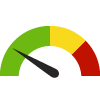




U.S. States
The distribution is based on data from 49 U.S. states and the District of Columbia.

US Value
(1.7)
The regional value is compared to the national value.

Prior Value
(0.1)
Prior Value compares a measured value with the previously measured value. Confidence intervals were not taken into account in determining the direction of the comparison.

Trend
This comparison measures the indicator’s values over multiple time periods.<br>The Mann-Kendall Test for Statistical Significance is used to evaluate the trend<br>over 4 to 10 periods of measure, subject to data availability and comparability.
State: Kansas COVID-19 Daily Average Incidence Rate
State: Kansas COVID-19 Daily Average Incidence Rate
11.10
Cases per 100,000 population
(Mar 3, 2023)
Compared to:





U.S. States
The distribution is based on data from 50 U.S. states and the District of Columbia.

US Value
(10.97)
The regional value is compared to the national value.

Prior Value
(10.86)
Prior Value compares a measured value with the previously measured value. Confidence intervals were not taken into account in determining the direction of the comparison.

Trend
This comparison measures the indicator’s values over multiple time periods.<br>The Mann-Kendall Test for Statistical Significance is used to evaluate the trend<br>over 4 to 10 periods of measure, subject to data availability and comparability.
State: Kansas Flu Vaccinations: Medicare Population
State: Kansas Flu Vaccinations: Medicare Population
50.0%
(2022)
Compared to:





U.S. States
The distribution is based on data from 50 U.S. states and the District of Columbia.

US Value
(50.0%)
The regional value is compared to the national value.

Prior Value
(49.0%)
Prior Value compares a measured value with the previously measured value. Confidence intervals were not taken into account in determining the direction of the comparison.

Trend
This comparison measures the indicator’s values over multiple time periods.<br>The Mann-Kendall Test for Statistical Significance is used to evaluate the trend<br>over 4 to 10 periods of measure, subject to data availability and comparability.
State: Kansas Percent of Infants Fully Immunized at 24 Months
State: Kansas Percent of Infants Fully Immunized at 24 Months
71.1%
(2017-2018)
Compared to:



Prior Value
(69.2%)
Prior Value compares a measured value with the previously measured value. Confidence intervals were taken into account in determining the direction of the comparison.

Trend
This comparison measures the indicator’s values over multiple time periods.<br>The Mann-Kendall Test for Statistical Significance is used to evaluate the trend<br>over 4 to 10 periods of measure, subject to data availability and comparability.
State: Kansas Pneumonia Vaccinations: Medicare Population
State: Kansas Pneumonia Vaccinations: Medicare Population
7.0%
(2022)
Compared to:
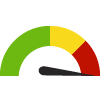




U.S. States
The distribution is based on data from 50 U.S. states and the District of Columbia.

US Value
(8.0%)
The regional value is compared to the national value.

Prior Value
(6.0%)
Prior Value compares a measured value with the previously measured value. Confidence intervals were not taken into account in determining the direction of the comparison.

Trend
This comparison measures the indicator’s values over multiple time periods.<br>The Mann-Kendall Test for Statistical Significance is used to evaluate the trend<br>over 4 to 10 periods of measure, subject to data availability and comparability.
State: Kansas
Health / Maternal, Fetal & Infant Health
Value
Compared to:
State: Kansas Infant Mortality Rate
State: Kansas Infant Mortality Rate
5.9
Deaths per 1,000 live births
(2017-2021)
Compared to:





US Value
(5.9 in 2012-2016)
The regional value is compared to the most current national value.

Prior Value
(6.0)
Prior Value compares a measured value with the previously measured value. Confidence intervals were taken into account in determining the direction of the comparison.

Trend
This comparison measures the indicator’s values over multiple time periods.<br>The Mann-Kendall Test for Statistical Significance is used to evaluate the trend<br>over 4 to 10 periods of measure, subject to data availability and comparability.

HP 2030 Target
(5.0)
State: Kansas Number of Births per 1,000 Population
State: Kansas Number of Births per 1,000 Population
11.9
Births per 1,000 population
(2019-2021)
Compared to:




US Value
(12.5 in 2013-2015)
The Kansas State value is compared to the U.S. value. Three-year time period for this comparison is 2013-2015, this is the most current US data at this time.

Prior Value
(12.1)
Prior Value compares a measured value with the previously measured value. Confidence intervals were taken into account in determining the direction of the comparison.

Trend
This comparison measures the indicator’s values over multiple time periods.<br>The Mann-Kendall Test for Statistical Significance is used to evaluate the trend<br>over 4 to 10 periods of measure, subject to data availability and comparability.
State: Kansas Percent of all Births Occurring to Teens (15-19)
State: Kansas Percent of all Births Occurring to Teens (15-19)
5.0%
(2019-2021)
Compared to:




US Value
(18.8% in 2015-2017)
The regional value is compared to the most current single year national value.

Prior Value
(5.2%)
Prior Value compares a measured value with the previously measured value. Confidence intervals were taken into account in determining the direction of the comparison.

Trend
This comparison measures the indicator’s values over multiple time periods.<br>The Mann-Kendall Test for Statistical Significance is used to evaluate the trend<br>over 4 to 10 periods of measure, subject to data availability and comparability.
State: Kansas Percent of Births Occurring to Unmarried Women
State: Kansas Percent of Births Occurring to Unmarried Women
36.4%
(2019-2021)
Compared to:




US Value
(39.8% in 2015-2017)
The regional value is compared to the most current single year national value.

Prior Value
(36.5%)
Prior Value compares a measured value with the previously measured value. Confidence intervals were taken into account in determining the direction of the comparison.

Trend
This comparison measures the indicator’s values over multiple time periods.<br>The Mann-Kendall Test for Statistical Significance is used to evaluate the trend<br>over 4 to 10 periods of measure, subject to data availability and comparability.
State: Kansas Percent of births Where Mother Smoked During Pregnancy
State: Kansas Percent of births Where Mother Smoked During Pregnancy
7.9%
(2019-2021)
Compared to:




US Value
(6.9% in 2015-2017)
The regional value is compared to the most current single year national value.

Prior Value
(8.7%)
Prior Value compares a measured value with the previously measured value. Confidence intervals were taken into account in determining the direction of the comparison.

Trend
This comparison measures the indicator’s values over multiple time periods.<br>The Mann-Kendall Test for Statistical Significance is used to evaluate the trend<br>over 4 to 10 periods of measure, subject to data availability and comparability.
81.3%
(2019-2021)
Compared to:





US Value
(77.3% in 2015-2017)
The regional value is compared to the most current single year national value.

Prior Value
(81.0%)
Prior Value compares a measured value with the previously measured value. Confidence intervals were taken into account in determining the direction of the comparison.

Trend
This comparison measures the indicator’s values over multiple time periods.<br>The Mann-Kendall Test for Statistical Significance is used to evaluate the trend<br>over 4 to 10 periods of measure, subject to data availability and comparability.

HP 2030 Target
(80.5%)
State: Kansas Percent of Births with Inadequate Birth Spacing
State: Kansas Percent of Births with Inadequate Birth Spacing
10.2%
(2019-2021)
Compared to:




US Value
(11.8% in 2015-2017)
The regional value is compared to the most current single year national value.

Prior Value
(10.1%)
Prior Value compares a measured value with the previously measured value. Confidence intervals were taken into account in determining the direction of the comparison.

Trend
This comparison measures the indicator’s values over multiple time periods.<br>The Mann-Kendall Test for Statistical Significance is used to evaluate the trend<br>over 4 to 10 periods of measure, subject to data availability and comparability.
State: Kansas Percent of Births with Low Birth Weight
State: Kansas Percent of Births with Low Birth Weight
7.4%
(2019-2021)
Compared to:




US Value
(8.3% in 2015-2017)
The regional value is compared to the most current single year national value.

Prior Value
(7.4%)
Prior Value compares a measured value with the previously measured value. Confidence intervals were taken into account in determining the direction of the comparison.

Trend
This comparison measures the indicator’s values over multiple time periods.<br>The Mann-Kendall Test for Statistical Significance is used to evaluate the trend<br>over 4 to 10 periods of measure, subject to data availability and comparability.
State: Kansas Percent of WIC Mothers Breastfeeding Exclusively
State: Kansas Percent of WIC Mothers Breastfeeding Exclusively
18.2%
(2023)
Compared to:



Prior Value
(16.3%)
Prior Value compares a measured value with the previously measured value. Confidence intervals were not taken into account in determining the direction of the comparison.

Trend
This comparison measures the indicator’s values over multiple time periods.<br>The Mann-Kendall Test for Statistical Significance is used to evaluate the trend<br>over 4 to 10 periods of measure, subject to data availability and comparability.
State: Kansas Percentage of Premature Births
State: Kansas Percentage of Premature Births
10.0%
(2019-2021)
Compared to:





US Value
(9.9% in 2015-2017)
The regional value is compared to the most current single year national value.

Prior Value
(9.8%)
Prior Value compares a measured value with the previously measured value. Confidence intervals were taken into account in determining the direction of the comparison.

Trend
This comparison measures the indicator’s values over multiple time periods.<br>The Mann-Kendall Test for Statistical Significance is used to evaluate the trend<br>over 4 to 10 periods of measure, subject to data availability and comparability.

HP 2030 Target
(9.4%)
State: Kansas
Health / Medications & Prescriptions
Value
Compared to:
State: Kansas Poisoning (Drugs) Hospital Admission Rate
State: Kansas Poisoning (Drugs) Hospital Admission Rate
3.5
Per 10,000 population
(2018-2020)
Compared to:


Prior Value
(3.6)
Prior Value compares a measured value with the previously measured value. Confidence intervals were taken into account in determining the direction of the comparison.
State: Kansas
Health / Mental Health & Mental Disorders
Value
Compared to:
State: Kansas Depression: Medicare Population
State: Kansas Depression: Medicare Population
18.0%
(2022)
Compared to:





U.S. States
The distribution is based on data from 50 U.S. states and the District of Columbia.

US Value
(16.0%)
The regional value is compared to the national value.

Prior Value
(18.0%)
Prior Value compares a measured value with the previously measured value. Confidence intervals were not taken into account in determining the direction of the comparison.

Trend
This comparison measures the indicator’s values over multiple time periods.<br>The Mann-Kendall Test for Statistical Significance is used to evaluate the trend<br>over 4 to 10 periods of measure, subject to data availability and comparability.
State: Kansas Frequent Mental Distress
State: Kansas Frequent Mental Distress
14.4%
(2019)
Compared to:




U.S. States
The distribution is based on data from 49 U.S. states and the District of Columbia.

US Value
(14.0%)
The regional value is compared to the national value.

Prior Value
(12.6%)
Prior Value compares a measured value with the previously measured value. Confidence intervals were taken into account in determining the direction of the comparison.
State: Kansas Mental Behavior Hospital Admissions Rate
State: Kansas Mental Behavior Hospital Admissions Rate
70.6
Per 10,000 population
(2018-2020)
Compared to:


Prior Value
(70.8)
Prior Value compares a measured value with the previously measured value. Confidence intervals were taken into account in determining the direction of the comparison.
State: Kansas Mental Health Provider Rate
State: Kansas Mental Health Provider Rate
238
Providers per 100,000 population
(2023)
Compared to:




U.S. States
The distribution is based on data from 50 U.S. states and the District of Columbia.

Prior Value
(224)
Prior Value compares a measured value with the previously measured value. Confidence intervals were not taken into account in determining the direction of the comparison.

Trend
This comparison measures the indicator’s values over multiple time periods.<br>The Mann-Kendall Test for Statistical Significance is used to evaluate the trend<br>over 4 to 10 periods of measure, subject to data availability and comparability.
State: Kansas
Health / Mortality Data
Value
Compared to:
23.3
Deaths per 100,000 population
(2018-2020)
Compared to:




US Value
(31.0 in 2015-2017)
The Kansas State value is compared to the U.S. value. U.S. comparison value is taken from the most recent single year (2017) NCHS preliminary data report.

Prior Value
(22.9)
Prior Value compares a measured value with the previously measured value. Confidence intervals were taken into account in determining the direction of the comparison.

Trend
This comparison measures the indicator’s values over multiple time periods.<br>The Mann-Kendall Test for Statistical Significance is used to evaluate the trend<br>over 4 to 10 periods of measure, subject to data availability and comparability.
151.4
Deaths per 100,000 population
(2018-2020)
Compared to:





US Value
(158.5 in 2014-2016)
The Kansas State value is compared to the U.S. value. U.S. comparison value is taken from the most recent single year (2015) NCHS preliminary data report.

Prior Value
(152.9)
Prior Value compares a measured value with the previously measured value. Confidence intervals were taken into account in determining the direction of the comparison.

Trend
This comparison measures the indicator’s values over multiple time periods.<br>The Mann-Kendall Test for Statistical Significance is used to evaluate the trend<br>over 4 to 10 periods of measure, subject to data availability and comparability.

HP 2030 Target
(122.7)
35.2
Deaths per 100,000 population
(2018-2020)
Compared to:





US Value
(37.6 in 2014-2016)
The Kansas State value is compared to the U.S. value. U.S. comparison value is taken from the most recent single year (2015) NCHS preliminary data report.

Prior Value
(35.5)
Prior Value compares a measured value with the previously measured value. Confidence intervals were taken into account in determining the direction of the comparison.

Trend
This comparison measures the indicator’s values over multiple time periods.<br>The Mann-Kendall Test for Statistical Significance is used to evaluate the trend<br>over 4 to 10 periods of measure, subject to data availability and comparability.

HP 2030 Target
(33.4)
47.1
Deaths per 100,000 population
(2018-2020)
Compared to:




US Value
(40.9 in 2015-2017)
The Kansas State value is compared to the U.S. value. U.S. comparison value is taken from the most recent single year (2017) NCHS preliminary data report.

Prior Value
(49.7)
Prior Value compares a measured value with the previously measured value. Confidence intervals were taken into account in determining the direction of the comparison.

Trend
This comparison measures the indicator’s values over multiple time periods.<br>The Mann-Kendall Test for Statistical Significance is used to evaluate the trend<br>over 4 to 10 periods of measure, subject to data availability and comparability.
25.0
Deaths per 100,000 population
(2018-2020)
Compared to:




US Value
(21.3 in 2014-2016)
The Kansas State value is compared to the U.S. value. U.S. comparison value is taken from the most recent single year (2015) NCHS preliminary data report.

Prior Value
(23.8)
Prior Value compares a measured value with the previously measured value. Confidence intervals were taken into account in determining the direction of the comparison.

Trend
This comparison measures the indicator’s values over multiple time periods.<br>The Mann-Kendall Test for Statistical Significance is used to evaluate the trend<br>over 4 to 10 periods of measure, subject to data availability and comparability.
162.0
Deaths per 100,000 population
(2018-2020)
Compared to:




US Value
(165.0 in 2015-2017)
The Kansas State value is compared to the U.S. value. U.S. comparison value is taken from the most recent single year (2017) NCHS preliminary data report.

Prior Value
(158.7)
Prior Value compares a measured value with the previously measured value. Confidence intervals were taken into account in determining the direction of the comparison.

Trend
This comparison measures the indicator’s values over multiple time periods.<br>The Mann-Kendall Test for Statistical Significance is used to evaluate the trend<br>over 4 to 10 periods of measure, subject to data availability and comparability.
5.9
Deaths per 100,000 population
(2018-2020)
Compared to:





US Value
(5.7 in 2014-2016)
The Kansas State value is compared to the U.S. value. U.S. comparison value is taken from the most recent single year (2015) NCHS preliminary data report.

Prior Value
(5.6)
Prior Value compares a measured value with the previously measured value. Confidence intervals were taken into account in determining the direction of the comparison.

Trend
This comparison measures the indicator’s values over multiple time periods.<br>The Mann-Kendall Test for Statistical Significance is used to evaluate the trend<br>over 4 to 10 periods of measure, subject to data availability and comparability.

HP 2030 Target
(5.5)
State: Kansas Age-adjusted Mortality Rate per 100,000 population
State: Kansas Age-adjusted Mortality Rate per 100,000 population
795.9
Deaths per 100,000 population
(2018-2020)
Compared to:




US Value
(731.9 in 2015-2017)
The Kansas State value is compared to the U.S. value. U.S. comparison value is taken from the most recent single year (2017) NCHS preliminary data report.

Prior Value
(759.2)
Prior Value compares a measured value with the previously measured value. Confidence intervals were taken into account in determining the direction of the comparison.

Trend
This comparison measures the indicator’s values over multiple time periods.<br>The Mann-Kendall Test for Statistical Significance is used to evaluate the trend<br>over 4 to 10 periods of measure, subject to data availability and comparability.
14.8
Deaths per 100,000 population
(2018-2020)
Compared to:




US Value
(13.4 in 2014-2016)
The Kansas State value is compared to the U.S. value. U.S. comparison value is taken from the most recent single year (2015) NCHS preliminary data report.

Prior Value
(15.0)
Prior Value compares a measured value with the previously measured value. Confidence intervals were taken into account in determining the direction of the comparison.

Trend
This comparison measures the indicator’s values over multiple time periods.<br>The Mann-Kendall Test for Statistical Significance is used to evaluate the trend<br>over 4 to 10 periods of measure, subject to data availability and comparability.
18.5
Deaths per 100,000 population
(2018-2020)
Compared to:





US Value
(14.0 in 2015-2017)
The Kansas State value is compared to the U.S. value. U.S. comparison value is taken from the most recent single year (2017) NCHS preliminary data report.

Prior Value
(18.7)
Prior Value compares a measured value with the previously measured value. Confidence intervals were taken into account in determining the direction of the comparison.

Trend
This comparison measures the indicator’s values over multiple time periods.<br>The Mann-Kendall Test for Statistical Significance is used to evaluate the trend<br>over 4 to 10 periods of measure, subject to data availability and comparability.

HP 2030 Target
(12.8)
13.6
Deaths per 100,000 population
(2018-2020)
Compared to:





US Value
(11.4 in 2014-2016)
The Kansas State value is compared to the U.S. value. U.S. comparison value is taken from the most recent single year (2015) NCHS preliminary data report.

Prior Value
(14.1)
Prior Value compares a measured value with the previously measured value. Confidence intervals were taken into account in determining the direction of the comparison.

Trend
This comparison measures the indicator’s values over multiple time periods.<br>The Mann-Kendall Test for Statistical Significance is used to evaluate the trend<br>over 4 to 10 periods of measure, subject to data availability and comparability.

HP 2030 Target
(10.1)
48.7
Deaths per 100,000 population
(2018-2020)
Compared to:





US Value
(49.5 in 2015-2017)
The Kansas State value is compared to the U.S. value. U.S. comparison value is taken from the most recent single year (2017) NCHS preliminary data report.

Prior Value
(47.2)
Prior Value compares a measured value with the previously measured value. Confidence intervals were taken into account in determining the direction of the comparison.

Trend
This comparison measures the indicator’s values over multiple time periods.<br>The Mann-Kendall Test for Statistical Significance is used to evaluate the trend<br>over 4 to 10 periods of measure, subject to data availability and comparability.

HP 2030 Target
(43.2)
State: Kansas Age-Adjusted Years of Potential Life Lost - Alzheimers
State: Kansas Age-Adjusted Years of Potential Life Lost - Alzheimers
11.0
Years per 100,000 Population
(2018-2020)
Compared to:



Prior Value
(10.3)
Prior Value compares a measured value with the previously measured value. Confidence intervals were taken into account in determining the direction of the comparison.

Trend
This comparison measures the indicator’s values over multiple time periods.<br>The Mann-Kendall Test for Statistical Significance is used to evaluate the trend<br>over 4 to 10 periods of measure, subject to data availability and comparability.
State: Kansas Age-Adjusted Years of Potential Life Lost - Cancer
State: Kansas Age-Adjusted Years of Potential Life Lost - Cancer
1,176.7
Years per 100,000 Population
(2018-2020)
Compared to:



Prior Value
(1,180.8)
Prior Value compares a measured value with the previously measured value. Confidence intervals were taken into account in determining the direction of the comparison.

Trend
This comparison measures the indicator’s values over multiple time periods.<br>The Mann-Kendall Test for Statistical Significance is used to evaluate the trend<br>over 4 to 10 periods of measure, subject to data availability and comparability.
149.9
Years per 100,000 Population
(2018-2020)
Compared to:



Prior Value
(146.9)
Prior Value compares a measured value with the previously measured value. Confidence intervals were taken into account in determining the direction of the comparison.

Trend
This comparison measures the indicator’s values over multiple time periods.<br>The Mann-Kendall Test for Statistical Significance is used to evaluate the trend<br>over 4 to 10 periods of measure, subject to data availability and comparability.
199.2
Years per 100,000 Population
(2018-2020)
Compared to:



Prior Value
(206.1)
Prior Value compares a measured value with the previously measured value. Confidence intervals were taken into account in determining the direction of the comparison.

Trend
This comparison measures the indicator’s values over multiple time periods.<br>The Mann-Kendall Test for Statistical Significance is used to evaluate the trend<br>over 4 to 10 periods of measure, subject to data availability and comparability.
State: Kansas Age-Adjusted Years of Potential Life Lost - Diabetes
State: Kansas Age-Adjusted Years of Potential Life Lost - Diabetes
201.3
Years per 100,000 Population
(2018-2020)
Compared to:



Prior Value
(193.1)
Prior Value compares a measured value with the previously measured value. Confidence intervals were taken into account in determining the direction of the comparison.

Trend
This comparison measures the indicator’s values over multiple time periods.<br>The Mann-Kendall Test for Statistical Significance is used to evaluate the trend<br>over 4 to 10 periods of measure, subject to data availability and comparability.
899.4
Years per 100,000 Population
(2018-2020)
Compared to:



Prior Value
(855.0)
Prior Value compares a measured value with the previously measured value. Confidence intervals were taken into account in determining the direction of the comparison.

Trend
This comparison measures the indicator’s values over multiple time periods.<br>The Mann-Kendall Test for Statistical Significance is used to evaluate the trend<br>over 4 to 10 periods of measure, subject to data availability and comparability.
State: Kansas Age-Adjusted Years of Potential Life Lost - Homicide
State: Kansas Age-Adjusted Years of Potential Life Lost - Homicide
264.9
Years per 100,000 Population
(2018-2020)
Compared to:



Prior Value
(248.8)
Prior Value compares a measured value with the previously measured value. Confidence intervals were taken into account in determining the direction of the comparison.

Trend
This comparison measures the indicator’s values over multiple time periods.<br>The Mann-Kendall Test for Statistical Significance is used to evaluate the trend<br>over 4 to 10 periods of measure, subject to data availability and comparability.
79.2
Years per 100,000 Population
(2018-2020)
Compared to:



Prior Value
(74.4)
Prior Value compares a measured value with the previously measured value. Confidence intervals were taken into account in determining the direction of the comparison.

Trend
This comparison measures the indicator’s values over multiple time periods.<br>The Mann-Kendall Test for Statistical Significance is used to evaluate the trend<br>over 4 to 10 periods of measure, subject to data availability and comparability.
State: Kansas Age-Adjusted Years of Potential Life Lost - Suicide
State: Kansas Age-Adjusted Years of Potential Life Lost - Suicide
673.8
Years per 100,000 Population
(2018-2020)
Compared to:



Prior Value
(672.0)
Prior Value compares a measured value with the previously measured value. Confidence intervals were taken into account in determining the direction of the comparison.

Trend
This comparison measures the indicator’s values over multiple time periods.<br>The Mann-Kendall Test for Statistical Significance is used to evaluate the trend<br>over 4 to 10 periods of measure, subject to data availability and comparability.
460.5
Years per 100,000 Population
(2018-2020)
Compared to:



Prior Value
(484.2)
Prior Value compares a measured value with the previously measured value. Confidence intervals were taken into account in determining the direction of the comparison.

Trend
This comparison measures the indicator’s values over multiple time periods.<br>The Mann-Kendall Test for Statistical Significance is used to evaluate the trend<br>over 4 to 10 periods of measure, subject to data availability and comparability.
1,198.7
Years per 100,000 Population
(2018-2020)
Compared to:



Prior Value
(1,127.7)
Prior Value compares a measured value with the previously measured value. Confidence intervals were taken into account in determining the direction of the comparison.

Trend
This comparison measures the indicator’s values over multiple time periods.<br>The Mann-Kendall Test for Statistical Significance is used to evaluate the trend<br>over 4 to 10 periods of measure, subject to data availability and comparability.
State: Kansas
Health / Nutrition & Healthy Eating
Value
Compared to:
43.7%
(2021)
Compared to:



US Value
(36.8% in 2017)
The regional value is compared to the national value.

Prior Value
(37.5%)
Prior Value compares a measured value with the previously measured value. Confidence intervals were taken into account in determining the direction of the comparison.
19.7%
(2021)
Compared to:




US Value
(18.1% in 2017)
The regional value is compared to the national value.

Prior Value
(17.9%)
Prior Value compares a measured value with the previously measured value. Confidence intervals were taken into account in determining the direction of the comparison.

Trend
This comparison measures the indicator’s values over multiple time periods.<br>The Mann-Kendall Test for Statistical Significance is used to evaluate the trend<br>over 4 to 10 periods of measure, subject to data availability and comparability.
State: Kansas
Health / Older Adults
Value
Compared to:
State: Kansas Adult Day Care Spending-to-Income Ratio
State: Kansas Adult Day Care Spending-to-Income Ratio
11.9%
(2023)
Compared to:



U.S. States
The distribution is based on data from 50 U.S. states and the District of Columbia.

Prior Value
(12.3%)
Prior Value compares a measured value with the previously measured value. Confidence intervals were not taken into account in determining the direction of the comparison.
State: Kansas Adults 65+ with a Disability
State: Kansas Adults 65+ with a Disability
33.6%
(2018-2022)
Compared to:



US Value
(33.3%)
The regional value is compared to the national value.

Trend
This comparison measures the indicator’s values over multiple time periods.<br>The Mann-Kendall Test for Statistical Significance is used to evaluate the trend<br>over 4 to 10 periods of measure, subject to data availability and comparability.
State: Kansas Adults 65+ with a Hearing Difficulty
State: Kansas Adults 65+ with a Hearing Difficulty
15.5%
(2018-2022)
Compared to:



US Value
(13.7%)
The regional value is compared to the national value.

Trend
This comparison measures the indicator’s values over multiple time periods.<br>The Mann-Kendall Test for Statistical Significance is used to evaluate the trend<br>over 4 to 10 periods of measure, subject to data availability and comparability.
State: Kansas Adults 65+ with a Self-Care Difficulty
State: Kansas Adults 65+ with a Self-Care Difficulty
5.9%
(2018-2022)
Compared to:



US Value
(7.4%)
The regional value is compared to the national value.

Trend
This comparison measures the indicator’s values over multiple time periods.<br>The Mann-Kendall Test for Statistical Significance is used to evaluate the trend<br>over 4 to 10 periods of measure, subject to data availability and comparability.
State: Kansas Adults 65+ with a Vision Difficulty
State: Kansas Adults 65+ with a Vision Difficulty
5.8%
(2018-2022)
Compared to:



US Value
(6.0%)
The regional value is compared to the national value.

Trend
This comparison measures the indicator’s values over multiple time periods.<br>The Mann-Kendall Test for Statistical Significance is used to evaluate the trend<br>over 4 to 10 periods of measure, subject to data availability and comparability.
State: Kansas Adults 65+ with an Independent Living Difficulty
State: Kansas Adults 65+ with an Independent Living Difficulty
11.7%
(2018-2022)
Compared to:



US Value
(13.6%)
The regional value is compared to the national value.

Trend
This comparison measures the indicator’s values over multiple time periods.<br>The Mann-Kendall Test for Statistical Significance is used to evaluate the trend<br>over 4 to 10 periods of measure, subject to data availability and comparability.
State: Kansas Alzheimer's Disease or Dementia: Medicare Population
State: Kansas Alzheimer's Disease or Dementia: Medicare Population
6.0%
(2022)
Compared to:





U.S. States
The distribution is based on data from 50 U.S. states and the District of Columbia.

US Value
(6.0%)
The regional value is compared to the national value.

Prior Value
(6.0%)
Prior Value compares a measured value with the previously measured value. Confidence intervals were not taken into account in determining the direction of the comparison.

Trend
This comparison measures the indicator’s values over multiple time periods.<br>The Mann-Kendall Test for Statistical Significance is used to evaluate the trend<br>over 4 to 10 periods of measure, subject to data availability and comparability.
State: Kansas
Health / Oral Health
Value
Compared to:
State: Kansas Dentist Rate
State: Kansas Dentist Rate
63
Dentists per 100,000 population
(2022)
Compared to:




U.S. States
The distribution is based on data from 50 U.S. states and the District of Columbia.

Prior Value
(62)
Prior Value compares a measured value with the previously measured value. Confidence intervals were not taken into account in determining the direction of the comparison.

Trend
This comparison measures the indicator’s values over multiple time periods.<br>The Mann-Kendall Test for Statistical Significance is used to evaluate the trend<br>over 4 to 10 periods of measure, subject to data availability and comparability.
61.3%
(2022-2023)
Compared to:



Prior Value
(61.5%)
Prior Value compares a measured value with the previously measured value. Confidence intervals were not taken into account in determining the direction of the comparison.

Trend
This comparison measures the indicator’s values over multiple time periods.<br>The Mann-Kendall Test for Statistical Significance is used to evaluate the trend<br>over 4 to 10 periods of measure, subject to data availability and comparability.
13.8%
(2022-2023)
Compared to:



Prior Value
(15.1%)
Prior Value compares a measured value with the previously measured value. Confidence intervals were not taken into account in determining the direction of the comparison.

Trend
This comparison measures the indicator’s values over multiple time periods.<br>The Mann-Kendall Test for Statistical Significance is used to evaluate the trend<br>over 4 to 10 periods of measure, subject to data availability and comparability.
State: Kansas
Health / Other Conditions
Value
Compared to:
State: Kansas Chronic Kidney Disease: Medicare Population
State: Kansas Chronic Kidney Disease: Medicare Population
17.0%
(2022)
Compared to:





U.S. States
The distribution is based on data from 50 U.S. states and the District of Columbia.

US Value
(18.0%)
The regional value is compared to the national value.

Prior Value
(16.0%)
Prior Value compares a measured value with the previously measured value. Confidence intervals were not taken into account in determining the direction of the comparison.

Trend
This comparison measures the indicator’s values over multiple time periods.<br>The Mann-Kendall Test for Statistical Significance is used to evaluate the trend<br>over 4 to 10 periods of measure, subject to data availability and comparability.
State: Kansas Osteoporosis: Medicare Population
State: Kansas Osteoporosis: Medicare Population
11.0%
(2022)
Compared to:





U.S. States
The distribution is based on data from 50 U.S. states and the District of Columbia.

US Value
(11.0%)
The regional value is compared to the national value.

Prior Value
(10.0%)
Prior Value compares a measured value with the previously measured value. Confidence intervals were not taken into account in determining the direction of the comparison.

Trend
This comparison measures the indicator’s values over multiple time periods.<br>The Mann-Kendall Test for Statistical Significance is used to evaluate the trend<br>over 4 to 10 periods of measure, subject to data availability and comparability.
20.6%
(2021)
Compared to:




US Value
(20.1% in 2017)
The regional value is compared to the national value.

Prior Value
(20.9%)
Prior Value compares a measured value with the previously measured value. Confidence intervals were taken into account in determining the direction of the comparison.

Trend
This comparison measures the indicator’s values over multiple time periods.<br>The Mann-Kendall Test for Statistical Significance is used to evaluate the trend<br>over 4 to 10 periods of measure, subject to data availability and comparability.
34.0%
(2022)
Compared to:





U.S. States
The distribution is based on data from 50 U.S. states and the District of Columbia.

US Value
(35.0%)
The regional value is compared to the national value.

Prior Value
(32.0%)
Prior Value compares a measured value with the previously measured value. Confidence intervals were not taken into account in determining the direction of the comparison.

Trend
This comparison measures the indicator’s values over multiple time periods.<br>The Mann-Kendall Test for Statistical Significance is used to evaluate the trend<br>over 4 to 10 periods of measure, subject to data availability and comparability.
State: Kansas
Health / Physical Activity
Value
Compared to:
19.0%
(2017)
Compared to:




US Value
(20.3%)
The regional value is compared to the national value.

Prior Value
(19.3%)
Prior Value compares a measured value with the previously measured value. Confidence intervals were taken into account in determining the direction of the comparison.

Trend
This comparison measures the indicator’s values over multiple time periods.<br>The Mann-Kendall Test for Statistical Significance is used to evaluate the trend<br>over 4 to 10 periods of measure, subject to data availability and comparability.
State: Kansas
Health / Prevention & Safety
Value
Compared to:
State: Kansas Age-Adjusted Death Rate due to Firearms
State: Kansas Age-Adjusted Death Rate due to Firearms
14.7
Deaths per 100,000 population
(2018-2020)
Compared to:






U.S. States
The distribution is based on data from 50 U.S. states and the District of Columbia.

US Value
(12.0)
The regional value is compared to the national value.

Prior Value
(14.5)
Prior Value compares a measured value with the previously measured value. Confidence intervals were taken into account in determining the direction of the comparison.

Trend
This comparison measures the indicator’s values over multiple time periods.<br>The Mann-Kendall Test for Statistical Significance is used to evaluate the trend<br>over 4 to 10 periods of measure, subject to data availability and comparability.

HP 2030 Target
(10.7)
State: Kansas Injury Hospital Admission Rate
State: Kansas Injury Hospital Admission Rate
72.0
Per 10,000 population
(2018-2020)
Compared to:


Prior Value
(73.3)
Prior Value compares a measured value with the previously measured value. Confidence intervals were taken into account in determining the direction of the comparison.
State: Kansas
Health / Respiratory Diseases
Value
Compared to:
State: Kansas Asthma Hospital Admission Rate
State: Kansas Asthma Hospital Admission Rate
3.0
Per 10,000 population
(2018-2020)
Compared to:


Prior Value
(3.5)
Prior Value compares a measured value with the previously measured value. Confidence intervals were taken into account in determining the direction of the comparison.
State: Kansas Asthma: Medicare Population
State: Kansas Asthma: Medicare Population
6.0%
(2022)
Compared to:





U.S. States
The distribution is based on data from 50 U.S. states and the District of Columbia.

US Value
(7.0%)
The regional value is compared to the national value.

Prior Value
(6.0%)
Prior Value compares a measured value with the previously measured value. Confidence intervals were not taken into account in determining the direction of the comparison.

Trend
This comparison measures the indicator’s values over multiple time periods.<br>The Mann-Kendall Test for Statistical Significance is used to evaluate the trend<br>over 4 to 10 periods of measure, subject to data availability and comparability.
9.8
Per 10,000 population
(2018-2020)
Compared to:


Prior Value
(12.5)
Prior Value compares a measured value with the previously measured value. Confidence intervals were taken into account in determining the direction of the comparison.
State: Kansas COPD: Medicare Population
State: Kansas COPD: Medicare Population
12.0%
(2022)
Compared to:





U.S. States
The distribution is based on data from 50 U.S. states and the District of Columbia.

US Value
(11.0%)
The regional value is compared to the national value.

Prior Value
(12.0%)
Prior Value compares a measured value with the previously measured value. Confidence intervals were not taken into account in determining the direction of the comparison.

Trend
This comparison measures the indicator’s values over multiple time periods.<br>The Mann-Kendall Test for Statistical Significance is used to evaluate the trend<br>over 4 to 10 periods of measure, subject to data availability and comparability.
State: Kansas Pneumonia (Bacterial) Hospital Admission Rate
State: Kansas Pneumonia (Bacterial) Hospital Admission Rate
20.2
Per 10,000 population
(2018-2020)
Compared to:


Prior Value
(21.7)
Prior Value compares a measured value with the previously measured value. Confidence intervals were taken into account in determining the direction of the comparison.
State: Kansas
Health / Sexually Transmitted Infections
Value
Compared to:
State: Kansas Sexually Transmitted Disease Rate
State: Kansas Sexually Transmitted Disease Rate
6.1
Cases per 1,000 population
(2023)
Compared to:



Prior Value
(6.7)
Prior Value compares a measured value with the previously measured value. Confidence intervals were not taken into account in determining the direction of the comparison.

Trend
This comparison measures the indicator’s values over multiple time periods.<br>The Mann-Kendall Test for Statistical Significance is used to evaluate the trend<br>over 4 to 10 periods of measure, subject to data availability and comparability.
State: Kansas
Health / Tobacco Use
Value
Compared to:
State: Kansas Cigarette Spending-to-Income Ratio
State: Kansas Cigarette Spending-to-Income Ratio
2.2%
(2023)
Compared to:



U.S. States
The distribution is based on data from 50 U.S. states and the District of Columbia.

Prior Value
(2.2%)
Prior Value compares a measured value with the previously measured value. Confidence intervals were not taken into account in determining the direction of the comparison.
State: Kansas
Health / Weight Status
Value
Compared to:
State: Kansas Percent of Adults who are Overweight
State: Kansas Percent of Adults who are Overweight
34.4%
(2021)
Compared to:




US Value
(35.3% in 2017)
The regional value is compared to the national value.

Prior Value
(34.8%)
Prior Value compares a measured value with the previously measured value. Confidence intervals were taken into account in determining the direction of the comparison.

Trend
This comparison measures the indicator’s values over multiple time periods.<br>The Mann-Kendall Test for Statistical Significance is used to evaluate the trend<br>over 4 to 10 periods of measure, subject to data availability and comparability.
State: Kansas
Health / Wellness & Lifestyle
Value
Compared to:
State: Kansas Frequent Physical Distress
State: Kansas Frequent Physical Distress
11.0%
(2019)
Compared to:




U.S. States
The distribution is based on data from 49 U.S. states and the District of Columbia.

US Value
(12.0%)
The regional value is compared to the national value.

Prior Value
(11.0%)
Prior Value compares a measured value with the previously measured value. Confidence intervals were taken into account in determining the direction of the comparison.
83.4%
(2017)
Compared to:




US Value
(94.3%)
The regional value is compared to the national value.

Prior Value
(83.0%)
Prior Value compares a measured value with the previously measured value. Confidence intervals were taken into account in determining the direction of the comparison.

Trend
This comparison measures the indicator’s values over multiple time periods.<br>The Mann-Kendall Test for Statistical Significance is used to evaluate the trend<br>over 4 to 10 periods of measure, subject to data availability and comparability.
14.7%
(2021)
Compared to:




US Value
(17.7% in 2017)
The regional value is compared to the national value.

Prior Value
(16.7%)
Prior Value compares a measured value with the previously measured value. Confidence intervals were taken into account in determining the direction of the comparison.

Trend
This comparison measures the indicator’s values over multiple time periods.<br>The Mann-Kendall Test for Statistical Significance is used to evaluate the trend<br>over 4 to 10 periods of measure, subject to data availability and comparability.
State: Kansas
Community / Civic Engagement
Value
Compared to:
State: Kansas Voter Turnout: Presidential Election
State: Kansas Voter Turnout: Presidential Election
67.4%
(2016)
Compared to:




Prior Value
(66.8%)
Prior Value compares a measured value with the previously measured value. Confidence intervals were not taken into account in determining the direction of the comparison.

Trend
This comparison measures the indicator’s values over multiple time periods.<br>The Mann-Kendall Test for Statistical Significance is used to evaluate the trend<br>over 4 to 10 periods of measure, subject to data availability and comparability.

HP 2030 Target
(58.4%)
<div>SDOH-07: Increase the proportion of the voting-age citizens who vote</div>
State: Kansas
Community / Crime & Crime Prevention
Value
Compared to:
State: Kansas Age-Adjusted Death Rate due to Homicide
State: Kansas Age-Adjusted Death Rate due to Homicide
5.9
Deaths per 100,000 population
(2018-2020)
Compared to:






U.S. States
The distribution is based on data from 50 U.S. states and the District of Columbia.

US Value
(6.6)
The regional value is compared to the national value.

Prior Value
(5.7)
Prior Value compares a measured value with the previously measured value. Confidence intervals were taken into account in determining the direction of the comparison.

Trend
This comparison measures the indicator’s values over multiple time periods.<br>The Mann-Kendall Test for Statistical Significance is used to evaluate the trend<br>over 4 to 10 periods of measure, subject to data availability and comparability.

HP 2030 Target
(5.5)
<div>IVP-09: Reduce homicides <strong>(LEADING HEALTH INDICATOR)</strong></div>
State: Kansas Rate of Violent Crime per 1,000 Population
State: Kansas Rate of Violent Crime per 1,000 Population
4.4
Crimes per 1,000 population
(2022)
Compared to:




US Value
(3.7 in 2015)
The Kansas State value is compared to the US value. Under reporting of crime by some public safety jurisdictions may result in lower rates.

Prior Value
(4.6)
Prior Value compares a measured value with the previously measured value. Confidence intervals were not taken into account in determining the direction of the comparison.

Trend
This comparison measures the indicator’s values over multiple time periods.<br>The Mann-Kendall Test for Statistical Significance is used to evaluate the trend<br>over 4 to 10 periods of measure, subject to data availability and comparability.
State: Kansas
Community / Demographics
Value
Compared to:
State: Kansas Average Household Size
State: Kansas Average Household Size
2.50
Persons per household
(2018-2022)
Compared to:



US Value
(2.60)
The regional value is compared to the national value.

Trend
This comparison measures the indicator’s values over multiple time periods.<br>The Mann-Kendall Test for Statistical Significance is used to evaluate the trend<br>over 4 to 10 periods of measure, subject to data availability and comparability.
State: Kansas Female Population
State: Kansas Female Population
49.8%
(2022)
Compared to:




US Value
(50.4%)
The regional value is compared to the national value.

Prior Value
(49.7%)
Prior Value compares a measured value with the previously measured value. Confidence intervals were not taken into account in determining the direction of the comparison.

Trend
This comparison measures the indicator’s values over multiple time periods.<br>The Mann-Kendall Test for Statistical Significance is used to evaluate the trend<br>over 4 to 10 periods of measure, subject to data availability and comparability.
State: Kansas Foreign Born Persons
State: Kansas Foreign Born Persons
7.1%
(2018-2022)
Compared to:



US Value
(13.7%)
The regional value is compared to the national value.

Trend
This comparison measures the indicator’s values over multiple time periods.<br>The Mann-Kendall Test for Statistical Significance is used to evaluate the trend<br>over 4 to 10 periods of measure, subject to data availability and comparability.
State: Kansas Households
State: Kansas Households
1,148,635
Households
(2018-2022)
Compared to:


Trend
This comparison measures the indicator’s values over multiple time periods.<br>The Mann-Kendall Test for Statistical Significance is used to evaluate the trend<br>over 4 to 10 periods of measure, subject to data availability and comparability.
State: Kansas Male Population
State: Kansas Male Population
50.2%
(2022)
Compared to:




US Value
(49.6%)
The regional value is compared to the national value.

Prior Value
(50.3%)
Prior Value compares a measured value with the previously measured value. Confidence intervals were not taken into account in determining the direction of the comparison.

Trend
This comparison measures the indicator’s values over multiple time periods.<br>The Mann-Kendall Test for Statistical Significance is used to evaluate the trend<br>over 4 to 10 periods of measure, subject to data availability and comparability.
11.8%
(2018-2022)
Compared to:



US Value
(21.7%)
The regional value is compared to the national value.

Trend
This comparison measures the indicator’s values over multiple time periods.<br>The Mann-Kendall Test for Statistical Significance is used to evaluate the trend<br>over 4 to 10 periods of measure, subject to data availability and comparability.
State: Kansas Population American Indian and Alaska Native
State: Kansas Population American Indian and Alaska Native
1.2%
(2022)
Compared to:




US Value
(1.3%)
The regional value is compared to the national value.

Prior Value
(1.2%)
Prior Value compares a measured value with the previously measured value. Confidence intervals were not taken into account in determining the direction of the comparison.

Trend
This comparison measures the indicator’s values over multiple time periods.<br>The Mann-Kendall Test for Statistical Significance is used to evaluate the trend<br>over 4 to 10 periods of measure, subject to data availability and comparability.
State: Kansas Population Asian
State: Kansas Population Asian
3.2%
(2022)
Compared to:




US Value
(6.3%)
The regional value is compared to the national value.

Prior Value
(3.2%)
Prior Value compares a measured value with the previously measured value. Confidence intervals were not taken into account in determining the direction of the comparison.

Trend
This comparison measures the indicator’s values over multiple time periods.<br>The Mann-Kendall Test for Statistical Significance is used to evaluate the trend<br>over 4 to 10 periods of measure, subject to data availability and comparability.
State: Kansas Population Black or African American
State: Kansas Population Black or African American
6.2%
(2022)
Compared to:




US Value
(13.6%)
The regional value is compared to the national value.

Prior Value
(6.2%)
Prior Value compares a measured value with the previously measured value. Confidence intervals were not taken into account in determining the direction of the comparison.

Trend
This comparison measures the indicator’s values over multiple time periods.<br>The Mann-Kendall Test for Statistical Significance is used to evaluate the trend<br>over 4 to 10 periods of measure, subject to data availability and comparability.
State: Kansas Population Hispanic or Latino
State: Kansas Population Hispanic or Latino
13.0%
(2022)
Compared to:




US Value
(19.1%)
The regional value is compared to the national value.

Prior Value
(12.8%)
Prior Value compares a measured value with the previously measured value. Confidence intervals were not taken into account in determining the direction of the comparison.

Trend
This comparison measures the indicator’s values over multiple time periods.<br>The Mann-Kendall Test for Statistical Significance is used to evaluate the trend<br>over 4 to 10 periods of measure, subject to data availability and comparability.
State: Kansas Population Native Hawaiian and Other Pacific Islander
State: Kansas Population Native Hawaiian and Other Pacific Islander
0.2%
(2022)
Compared to:




US Value
(0.3%)
The regional value is compared to the national value.

Prior Value
(0.1%)
Prior Value compares a measured value with the previously measured value. Confidence intervals were not taken into account in determining the direction of the comparison.

Trend
This comparison measures the indicator’s values over multiple time periods.<br>The Mann-Kendall Test for Statistical Significance is used to evaluate the trend<br>over 4 to 10 periods of measure, subject to data availability and comparability.
State: Kansas Population Over Age 65
State: Kansas Population Over Age 65
17.2%
(2022)
Compared to:




US Value
(17.3%)
The regional value is compared to the national value.

Prior Value
(16.7%)
Prior Value compares a measured value with the previously measured value. Confidence intervals were not taken into account in determining the direction of the comparison.

Trend
This comparison measures the indicator’s values over multiple time periods.<br>The Mann-Kendall Test for Statistical Significance is used to evaluate the trend<br>over 4 to 10 periods of measure, subject to data availability and comparability.
State: Kansas Population Over Age 65 (Count)
State: Kansas Population Over Age 65 (Count)
478,994
People
(2018-2022)
Compared to:


Trend
This comparison measures the indicator’s values over multiple time periods.<br>The Mann-Kendall Test for Statistical Significance is used to evaluate the trend<br>over 4 to 10 periods of measure, subject to data availability and comparability.
State: Kansas Population Two or More Races
State: Kansas Population Two or More Races
3.3%
(2022)
Compared to:




US Value
(3.0%)
The regional value is compared to the national value.

Prior Value
(3.3%)
Prior Value compares a measured value with the previously measured value. Confidence intervals were not taken into account in determining the direction of the comparison.

Trend
This comparison measures the indicator’s values over multiple time periods.<br>The Mann-Kendall Test for Statistical Significance is used to evaluate the trend<br>over 4 to 10 periods of measure, subject to data availability and comparability.
State: Kansas Population Under Age 18
State: Kansas Population Under Age 18
23.5%
(2022)
Compared to:




US Value
(21.7%)
The regional value is compared to the national value.

Prior Value
(23.7%)
Prior Value compares a measured value with the previously measured value. Confidence intervals were not taken into account in determining the direction of the comparison.

Trend
This comparison measures the indicator’s values over multiple time periods.<br>The Mann-Kendall Test for Statistical Significance is used to evaluate the trend<br>over 4 to 10 periods of measure, subject to data availability and comparability.
State: Kansas Population Under Age 5
State: Kansas Population Under Age 5
6.0%
(2022)
Compared to:




US Value
(5.6%)
The regional value is compared to the national value.

Prior Value
(6.0%)
Prior Value compares a measured value with the previously measured value. Confidence intervals were not taken into account in determining the direction of the comparison.

Trend
This comparison measures the indicator’s values over multiple time periods.<br>The Mann-Kendall Test for Statistical Significance is used to evaluate the trend<br>over 4 to 10 periods of measure, subject to data availability and comparability.
State: Kansas Population White
State: Kansas Population White
85.9%
(2022)
Compared to:




US Value
(75.5%)
The regional value is compared to the national value.

Prior Value
(85.9%)
Prior Value compares a measured value with the previously measured value. Confidence intervals were not taken into account in determining the direction of the comparison.

Trend
This comparison measures the indicator’s values over multiple time periods.<br>The Mann-Kendall Test for Statistical Significance is used to evaluate the trend<br>over 4 to 10 periods of measure, subject to data availability and comparability.
State: Kansas Population White (Not Hispanic or Latino)
State: Kansas Population White (Not Hispanic or Latino)
74.3%
(2022)
Compared to:




US Value
(58.9%)
The regional value is compared to the national value.

Prior Value
(74.6%)
Prior Value compares a measured value with the previously measured value. Confidence intervals were not taken into account in determining the direction of the comparison.

Trend
This comparison measures the indicator’s values over multiple time periods.<br>The Mann-Kendall Test for Statistical Significance is used to evaluate the trend<br>over 4 to 10 periods of measure, subject to data availability and comparability.
State: Kansas Ratio of Children to Adults
State: Kansas Ratio of Children to Adults
31.2
Children per 100 Adults
(2020)
Compared to:




US Value
(28.5 in 2017)
The regional value is compared to the national value.

Prior Value
(31.3)
Prior Value compares a measured value with the previously measured value. Confidence intervals were not taken into account in determining the direction of the comparison.

Trend
This comparison measures the indicator’s values over multiple time periods.<br>The Mann-Kendall Test for Statistical Significance is used to evaluate the trend<br>over 4 to 10 periods of measure, subject to data availability and comparability.
State: Kansas Ratio of Elderly Persons and Children to Adults
State: Kansas Ratio of Elderly Persons and Children to Adults
57.7
Elderly persons & children per 100 adults
(2020)
Compared to:




US Value
(52.3 in 2017)
The regional value is compared to the national value.

Prior Value
(56.9)
Prior Value compares a measured value with the previously measured value. Confidence intervals were not taken into account in determining the direction of the comparison.

Trend
This comparison measures the indicator’s values over multiple time periods.<br>The Mann-Kendall Test for Statistical Significance is used to evaluate the trend<br>over 4 to 10 periods of measure, subject to data availability and comparability.
State: Kansas Ratio of Elderly Persons to Adults
State: Kansas Ratio of Elderly Persons to Adults
26.4
Elderly persons per 100 adults
(2020)
Compared to:




US Value
(23.8 in 2017)
The regional value is compared to the national value.

Prior Value
(25.6)
Prior Value compares a measured value with the previously measured value. Confidence intervals were not taken into account in determining the direction of the comparison.

Trend
This comparison measures the indicator’s values over multiple time periods.<br>The Mann-Kendall Test for Statistical Significance is used to evaluate the trend<br>over 4 to 10 periods of measure, subject to data availability and comparability.
State: Kansas Total Population
State: Kansas Total Population
2,937,150
People
(2022)
Compared to:



Prior Value
(2,937,922)
Prior Value compares a measured value with the previously measured value. Confidence intervals were not taken into account in determining the direction of the comparison.

Trend
This comparison measures the indicator’s values over multiple time periods.<br>The Mann-Kendall Test for Statistical Significance is used to evaluate the trend<br>over 4 to 10 periods of measure, subject to data availability and comparability.
State: Kansas Veteran Population
State: Kansas Veteran Population
7.4%
(2018-2022)
Compared to:



US Value
(6.6%)
The regional value is compared to the national value.

Trend
This comparison measures the indicator’s values over multiple time periods.<br>The Mann-Kendall Test for Statistical Significance is used to evaluate the trend<br>over 4 to 10 periods of measure, subject to data availability and comparability.
State: Kansas
Community / Public Safety
Value
Compared to:
State: Kansas Alcohol-Impaired Driving Deaths
State: Kansas Alcohol-Impaired Driving Deaths
19.9%
Percent of driving deaths with alcohol involvement
(2017-2021)
Compared to:





U.S. States
The distribution is based on data from 50 U.S. states and the District of Columbia.

US Value
(26.3%)
The regional value is compared to the national value.

Prior Value
(19.4%)
Prior Value compares a measured value with the previously measured value. Confidence intervals were taken into account in determining the direction of the comparison.

Trend
This comparison measures the indicator’s values over multiple time periods.<br>The Mann-Kendall Test for Statistical Significance is used to evaluate the trend<br>over 4 to 10 periods of measure, subject to data availability and comparability.
State: Kansas
Community / Social Environment
Value
Compared to:
State: Kansas People 65+ Living Alone
State: Kansas People 65+ Living Alone
28.8%
(2018-2022)
Compared to:
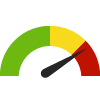



U.S. States
The distribution is based on data from 50 U.S. states and the District of Columbia.

US Value
(26.4%)
The regional value is compared to the national value.

Trend
This comparison measures the indicator’s values over multiple time periods.<br>The Mann-Kendall Test for Statistical Significance is used to evaluate the trend<br>over 4 to 10 periods of measure, subject to data availability and comparability.
State: Kansas People 65+ Living Alone (Count)
State: Kansas People 65+ Living Alone (Count)
137,903
People
(2018-2022)
Compared to:


Trend
This comparison measures the indicator’s values over multiple time periods.<br>The Mann-Kendall Test for Statistical Significance is used to evaluate the trend<br>over 4 to 10 periods of measure, subject to data availability and comparability.

